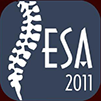Outcomes of Minimally Invasive Posterior Cervical Foraminotomy for Unilateral Cervical Radiculopathy
Article Type
Original Study
Abstract
Background: Cervical radiculopathy is a disorder marked by pain, motor, and/or sensory impairment that is caused by compression of one or more of the cervical nerve roots. The two recommended procedures for cervical radiculopathy are anterior cervical discectomy with fusion (ACDF) and minimally invasive posterior cervical foraminotomy (MI-PCF). A few studies in the literature addressed the indications and outcomes of MI-PCF. This study aims to highlight the outcomes of MI-PCF in patients with unilateral cervical radiculopathy. Methods: In this retrospective study, all medical records and images of patients with unilateral cervical radiculopathy who underwent MI-PCF and met the inclusion criteria were reported. The postoperative follow-up period was six months. Patients with unilateral cervical radiculopathy with radiological evidence of cervical foraminal stenosis due to posterolateral and/or foraminal disc prolapse, bony foraminal stenosis, or both were included. Preoperatively, patients were evaluated clinically by neurological examination, Visual Analog Scale (VAS), and Neck Disability Index (NDI), and radiologically by CT and MRI. Six months postoperatively, VAS, NDI, and modified Odom's criteria were evaluated, and postoperative CT scans were reviewed. Results: In total, 38 patients met the inclusion criteria. The foraminal stenosis was due to disc prolapse in 18 patients (47.4%), bony foraminal stenosis in 12 patients (31.6%), and both pathologies in eight patients (21%). Partial facetectomy was done in 12 patients (31.6%) with bony foraminal stenosis or both pathologies. Then, six months postoperatively, VAS and NDI scores decreased significantly, and the outcome was excellent in 27 (71%) patients, good in nine (23.7%) patients, and fair in two patients (5.3%) according to the modified Odom's criteria. Only one patient had a superficial wound infection that was successfully treated conservatively. Conclusion: This study clarifies the safety and effectiveness of MI-PCF in the context of unilateral cervical radiculopathy, regardless of the pathology of foraminal stenosis, with favorable clinical outcomes and low complication rates. Future research is essential for an understanding of the role of posterior foraminotomy in the surgical management of cervical radiculopathy.
Keywords
Cervical foraminotomy, Cervical disc disease, Foraminal stenosis, Minimally invasive, Radiculopathy
How to Cite This Article
Youssef, Essam Mohamed; Abdeen, Mohamed; Saleh, Mohammed Khalid; Eladawy, Amr; and Alaa Eldin, Ahmed Mohammed
(2025)
"Outcomes of Minimally Invasive Posterior Cervical Foraminotomy for Unilateral Cervical Radiculopathy,"
Advanced Spine Journal: Vol. 43
:
Iss.
1
, Article 11.
Available at: https://doi.org/10.57055/2974-4822.1314




















